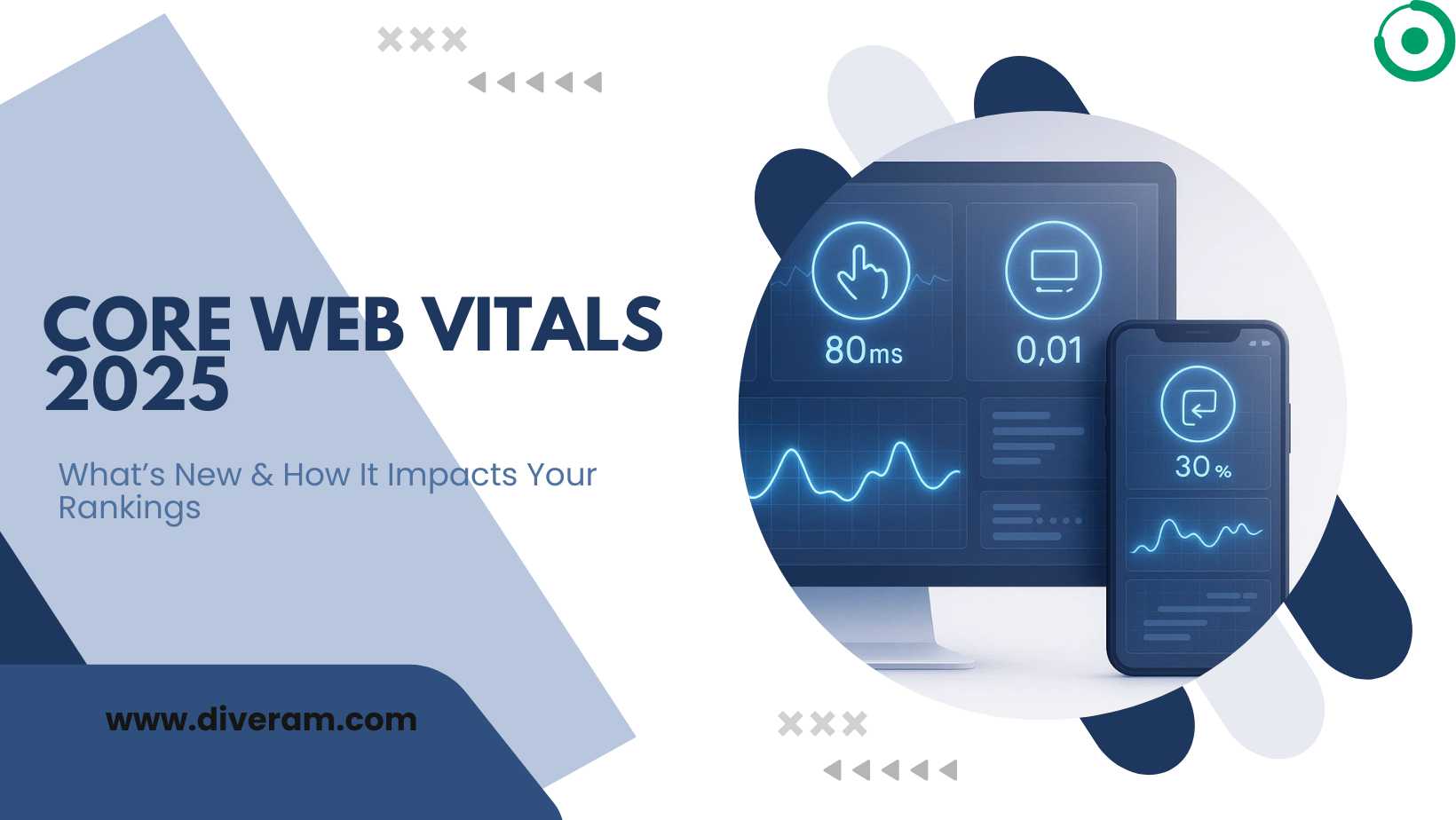Core Web Vitals 2025: How It Impacts Your Rankings

Google continues to evolve how it evaluates websites, and in 2025, Core Web Vitals have taken center stage. With user experience becoming a critical focus for search engines, traditional SEO methods alone are no longer sufficient to achieve strong rankings. Website performance, speed, and responsiveness are now essential components of your site’s ability to rank well. This comprehensive guide will explain what’s new in Core Web Vitals for 2025, how these updates impact SEO, and what you can do to stay ahead of the curve.
What Are Core Web Vitals?
Google introduced Core Web Vitals as key performance indicators to assess how effectively a webpage delivers user experience. Introduced in 2020, these vitals focus on real-world user experience signals such as load time, interactivity, and visual stability. Over the years, Google has continuously refined these metrics, making them a central part of the Page Experience Update.
The original three Core Web Vitals included:
- Largest Contentful Paint (LCP): Tracks the loading time of the most prominent content element visible to users. A good LCP score is 2.5 seconds or faster.
- First Input Delay (FID): Measures the time between a user’s first interaction and the browser’s response. A good score is under 100 milliseconds.
- Cumulative Layout Shift (CLS): Evaluates how visually stable a webpage remains by quantifying unexpected movements of elements. An optimal score is below 0.1.
While these metrics have served well, 2025 brings significant updates, especially with the replacement of FID.
What’s New in Core Web Vitals for 2025?
1. Interaction to Next Paint (INP) Takes Over from First Input Delay (FID)
In March 2024, Google confirmed that Interaction to Next Paint (INP) would take the place of First Input Delay (FID) as one of the Core Web Vitals. INP provides a more comprehensive measurement of interactivity by evaluating the time it takes for a page to respond to all user interactions, not just the first.
- Why this matters: FID only measured the delay for the first input, often overlooking subsequent lags. INP offers a more accurate reflection of how responsive a webpage is by considering multiple user interactions, not just the first.
- Good INP score: Under 200 milliseconds
For example, if a user clicks a button and experiences a lag before the action is executed, INP captures that latency, helping developers pinpoint real bottlenecks.
2. Tighter Scoring Thresholds
Google has revised scoring benchmarks to ensure that websites optimize not just for desktop, but primarily for mobile performance. This shift is critical, as Google continues to prioritize mobile-first indexing.
| Metric | Good | Needs Improvement | Poor |
| LCP | ≤ 2.5s | 2.5s – 4s | > 4s |
| INP | ≤ 200ms | 200-500ms | > 500ms |
| CLS | ≤ 0.1 | 0.1 – 0.25 | > 0.25 |
3. Focus on Responsiveness and Stability
Google’s 2025 update gives more weight to how responsive a site feels and how stable it remains during loading. This shift encourages developers to minimize layout shifts and provide smoother user interactions.
For example, loading ads or pop-ups that shift content mid-scroll can heavily impact your CLS score, degrading both UX and rankings.
The Influence of Core Web Vitals on Your Website’s SEO Performance
Google has officially integrated Core Web Vitals into its search ranking criteria. Although content relevance and backlinks still hold more weight, UX metrics like LCP, INP, and CLS can make or break a page’s visibility, especially in competitive niches.
Here’s how they affect SEO:
- Improved Rankings: Sites that meet all Core Web Vitals thresholds are more likely to rank higher.
- Better User Engagement: Faster, more responsive sites lead to lower bounce rates and higher conversion rates.
- Mobile-First Advantage: Optimizing for Web Vitals helps align with Google’s mobile-first indexing, a key ranking factor.
In fact, a study by Search Engine Journal revealed that pages with “good” Core Web Vitals saw a 24% reduction in bounce rate and a 13% increase in time on site.
How to Measure Your Website’s Web Vitals
Before you can improve, you need to measure. Here are some seo auditing tools you can use to measure your website’s vitals:
- Google PageSpeed Insights: Provides real-world and lab data with actionable recommendations.
- Lighthouse (via Chrome DevTools): Delivers in-depth insights on site performance, user accessibility, and technical health.
- Chrome User Experience Report (CrUX): Pulls field data from real users.
- Diveram’s SEO Audit Suite: A professional, all-in-one dashboard to monitor Core Web Vitals, generate detailed reports, and suggest optimizations.
Optimizing Core Web Vitals for Better Site Performance in 2025
Here’s a detailed guide to enhancing each Core Web Vital metric individually:
Largest Contentful Paint (LCP)
- Compress images using next-gen formats like WebP or AVIF
- Enable lazy loading for images and video
- Use fast hosting and a Content Delivery Network (CDN)
- Remove render-blocking JavaScript and CSS
Interaction to Next Paint (INP)
- Optimize JavaScript execution and minimize long tasks
- Defer non-critical third-party scripts
- Break up heavy interactions into smaller async tasks
- Avoid unnecessary DOM updates
Cumulative Layout Shift (CLS)
- Always define fixed dimensions for images and videos to prevent unexpected layout shifts.
- Avoid inserting elements above existing content
- Preload fonts to avoid flash-of-unstyled-text (FOUT)
- Reserve space for dynamic elements like ads
These improvements not only enhance your Core Web Vitals but also positively impact overall user satisfaction and SEO performance.
Conclusion: Web Vitals Are Non-Negotiable in 2025
Core Web Vitals are no longer just a technical SEO checkbox — they are central to how Google evaluates your site’s performance and user experience. With the introduction of INP and stricter mobile scoring, the 2025 update makes it clear: you need to deliver fast, stable, and interactive experiences to stay competitive.
Not sure where to start?
With Diveram, you get access to professional SEO reports, real-time Core Web Vitals monitoring, and actionable insights tailored to your website. Whether you’re an agency or an in-house marketer, Diveram helps you diagnose and fix performance issues before they affect your rankings. Start your free Core Web Vitals audit today → Diveram.com




